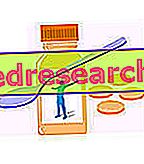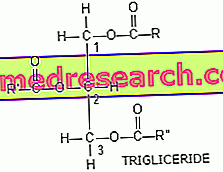Watch the video
X Watch the video on youtubeHigh Blood Pressure - Hypertension
High blood pressure is a disorder that affects over 10 million people, of which only ¼ can keep it under control.

Almost always (in 95% of cases), high blood pressure is essential, therefore independent of other pathological conditions; this form of hypertension is still idiopathic, ie its specific causes are not known. Then there are other types of hypertension, called secondary, which owe their onset to diseases of the kidneys or heart.
Essential hypertension (which from now on we will simply call "hypertension") is likely to have a multifactorial aetiology; among the most important causes we recognize: genetic predisposition / familiarity, overweight, incorrect diet, sedentariness, alcohol abuse and stress. The increase in pressure is also linked to aging.
All this attention to high blood pressure derives from the fact that a severe hypertension, and / or aggravated by other risk factors (eg smoking, diabetes, overweight, etc.), INCREASES SIGNIFICANTLY THE RISK OF CARDIO-CEREBRO-VASCULAR EVENTS ( cerebral stroke and coronary artery disease).
Lower the pressure
To lower the pressure (which is already definable hypertension, or which still falls within the series of PRE-hypertension) it is necessary to intervene on several fronts. First of all, if possible, it is essential to remove the primary causative agent; otherwise, it is necessary to resort to drug therapy under medical supervision. In both situations, it is always advisable to reduce the overall cardiovascular risk index by intervening also on any collateral risk factors, such as diet and lifestyle.
Ultimately, if high blood pressure is due exclusively to a physical, dietary and lifestyle condition, the priority interventions are:
- Low-calorie diet and increase in overall energy expenditure (in the case of overweight and obesity)
- Low salt diet, rich in potassium, magnesium and omega-3, poor in saturated / hydrogenated acids (possibly supported by some supplements such as arginine and herbal products)
- Begin a predominantly AEROBIC motor / sport activity protocol, perhaps associated with muscle toning exercises
- Eliminate all alcohol (and possibly even drinks containing STIMULATING nerves - like coffee)
- Eliminate smoking
- Minimize mental stress, also considering the intervention of a professional in the psychological sphere or the use of anxiolytic drugs.
Generally, this type of high blood pressure arises with advancing age and in proportion to the increase in body fat; however, in the West, we are witnessing more and more the manifestation of early hypertension (puberty).
On the contrary, if a hereditary basis is so strong that it ignores any other risk factor, pharmacological intervention is almost inevitable. Among the various molecules are used (alone or in combination): diuretics, adrenergic inhibitors, calcium antagonists, inhibitors of the renin-angiotensin system, direct-acting vasodilators.
Natural remedies
Natural ways to lower pressure
As anticipated, high blood pressure is the result of a profound metabolic decompensation.
Sometimes it is sufficient to intervene EXCLUSIVELY in a "natural" way and without the use of drugs that, generally, once assumed, CANNOT be interrupted but only decreased! However, this approach requires two essential requirements: a weak genetic basis and total respect for the strategy without exceptions.
In the previous paragraph we mentioned the priority actions to be taken to lower the pressure; they are almost all natural with the exception of drugs and, for the most "severe", supplements. Let's analyze them one by one:
- Elimination of cigarette smoking, alcohol consumption and abuse of stimulating nerves.
- Low Calorie Diet and Increased Overall Energy Expenditure: overweight is one of the factors that most affects the increase in blood pressure. It goes without saying that reducing excess fat up to normal weight can also enjoy a clear moderation in blood pressure; however, even the simple loss of a few extra kilos is useful, so much so that in general for every kg lost one can expect the reduction of 1mmHg of the pressure values.
To lose weight it is essential that the overall energy balance is negative, ie that the calories consumed are lower than those consumed. This result can be obtained with a low-calorie diet, perhaps supported by an increase in overall physical activity. The amount of energy reduction is around 30% compared to the total expenditure. The increase in expenditure involves both the basic physical activity (daily activities: cycling or walking, stairs etc.), and the desirable or physical activity. Increasing the expenditure means being able to benefit from a richer calorie diet, that is with more nutrients and energy, therefore more bearable.
- Nutritional balance and attention to the needs of hypertension: in addition to being hypocaloric, the hypertension diet must have some very specific requirements. These are:
- TOTAL elimination of added sodium chloride (table salt) and, sometimes, of sodium naturally present in foods. Sodium is a mineral that, if in excess, appears to be involved in the mechanisms of onset and aggravation of high blood pressure.
Sodium is naturally present in foods but, through the intake of raw (unprocessed) foods, it is never possible to create a nutritional excess. The only exception is made up of certain bivalve molluscs which, being alive and sealed, release seawater from their interior at the time of cooking. On the other hand, the main dietary sources of sodium in the human diet are related to the sodium chloride added in food during industrial processing or at the time of consumption, and to the sodium contained in certain food additives. To promote pressure reduction, certain precautions will therefore be essential, such as: prohibition of the addition of sodium chloride on foods at the time of consumption, prohibition of consumption of stock cube and prohibition of consumption of preserved meat, preserved fish, aged cheeses and vegetables in a jar.
- Increased potassium and magnesium with food: if sodium is a mineral responsible for the increase in pressure, potassium and magnesium (some also hypothesize calcium) act with a diametrically opposite mechanism. Among other things, in the healthy subject, "excess" potassium and magnesium are easily excreted by the kidneys, which greatly facilitates nutritional intervention: the more it is taken with food, the better! Obviously, this indication must subordinate to other nutritional considerations. Since these are minerals typically found in vegetables, fruit, whole grains and legumes, their massive intake could lead to some imbalances such as: excess dietary fiber and excess fructose.
- Increased omega 3 essential fatty acids and reduction of saturated / hydrogenated ones: in addition to significantly contributing to the production of endogenous cholesterol (increasing the cardio-vascular risk) saturated / hydrogenated fats are in some way related to the increase in blood pressure; it does not matter if it is a direct or indirect relationship, the important thing is to reduce them drastically avoiding to take on: fatty meats (the preserved ones, mentioned in point A), butter and fat cheeses (almost all the seasoned ones) are involved.
On the other hand, the omega 3s play a very important IPOtensive role and intervene on the reduction of cardiovascular risk through the reduction of triglycerides in the blood, the improvement of cholesterolemia, the anti-inflammatory function and the protection from compromises linked to a possible type diabetic condition 2. These nutrients are rather difficult to find and are found mainly in algae, krill, fish liver, flaxseed, hemp seed, kiwi seeds, wheat germ, soybean and (at lower concentrations) in all foods from which these seasoning fats are extracted.
- Start a motor / sport activity protocol: as mentioned, this must be predominantly AEROBIC, better if associated with muscle toning exercises. As far as aerobics is concerned, it is advisable to practice at least 3-4 weekly sessions lasting 50-60 minutes, with intensity oscillating between the aerobic band and just above the anaerobic threshold.
Toning through overloads takes on a secondary role and can be performed after aerobics or in independent sessions twice a week, avoiding excessive loads and working at high repetitions.
- Use of herbal products and supplements: they are not all natural products. For example, arginine is a synthetic amino acid (responsible for the endogenous production of nitric oxide at the cellular level). Its real hypotensive efficacy is still the subject of controversy. The same is true for potassium, magnesium and omega 3, although in this case the beneficial effect is overt. On the other hand, there are extracts and herbal products, in raw or dried form, which can promote the fight against high blood pressure; among these we remember the SPECIFICALLY hypotensive plants, such as: garlic, onion, rauwolfia, birch, hawthorn, cardiac, ginkgo biloba, blueberry, orthosiphon, mistletoe, red vine, olive, periwinkle, uncaria, lily of the valley, ligust, carcassé (hibiscus), evodia and Iranian yarrow. Eventually, they can be combined with foods / extracts with diuretic functions such as: pineapple, birch, artichoke, cucumber, walnut leaves, onion, horsetail, fennel, apple, nettle, elderflower, corn stigmas and dandelion.



